Outforia Quicktake: Key Takeaways
- Rocky Mountain National Park in Colorado covers 415 square miles and offers numerous hiking trails for visitors.
- The best time to visit is during summer and early fall when roads are accessible and scenery is most visible.
- It’s important to wear layered clothing, hike with a friend or let someone know your route, and pay attention to the changing weather.
- Some of the best hikes in the park include Coyote Valley Trail, Lily Lake, Bear Lake Trail, and Alpine Ridge Trail.
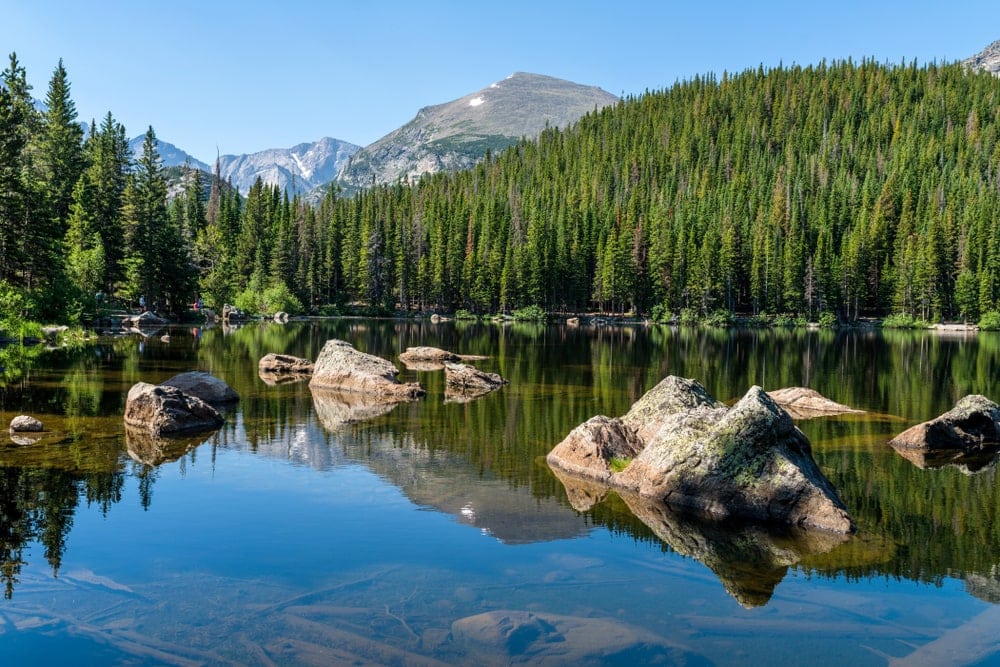
Rocky Mountain National Park spans throughout the section of the Rockies located in Colorado. It is one of the most spectacular portions of the mountain range. That’s why President Woodrow Wilson signed the Rocky Mountain National Park Act in 1915.
The park features 415 square miles of a protected mountain environment. There’s an incredible landscape offering countless adventures. However, when you only have a limited amount of time, you need to create a trip plan. That’s what we are here to help you do!
Throughout this article, we equip you with a complete toolbox to help you plan a safe, jaw-dropping trip to Rocky Mountain National Park (RMNP). That includes the best hikes in Rocky Mountain National Park, tips and tricks to have a successful trip, and how to easily get around the park.
Four Tips for Hiking in Rocky Mountain National Park
Before we dive into all the best hikes in Rocky Mountain National Park, let’s highlight some tips for your hiking trip. There are certain aspects of RMNP that set it apart from many other National Parks in America. The best way to enjoy an experience in the park is to be prepared before you arrive.
1. Plan your trip for the right time of the year.
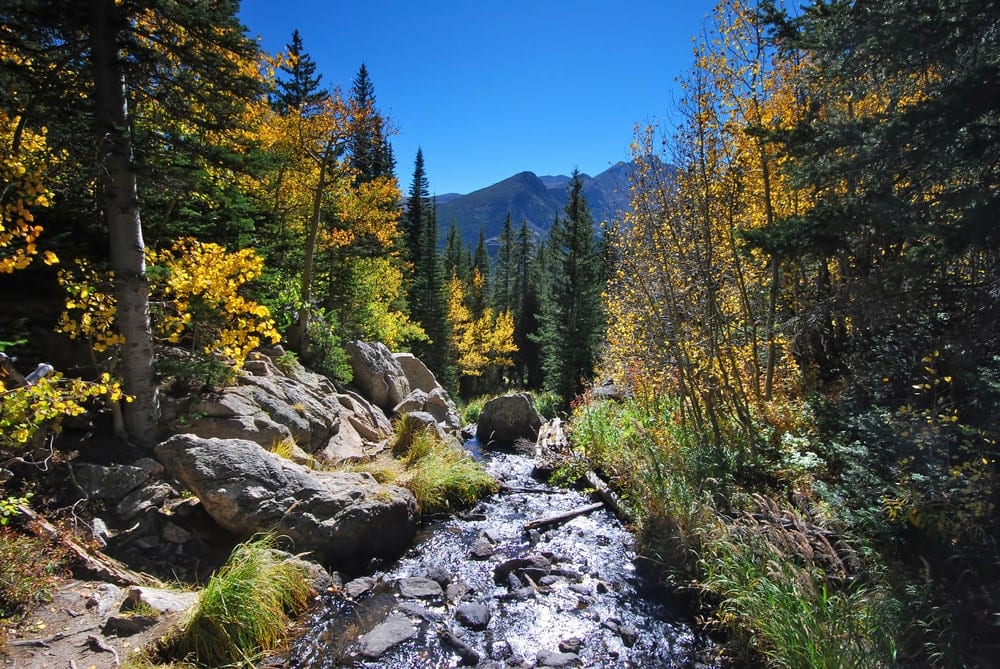
Planning a visit to Rocky Mountain National Park is heavily influenced by the changing seasons. Technically open all year round, the Trail Ridge Road through the park is always closed during the winter when it is completely buried in deep snow. Those closures can limit your access to some of the trailheads in higher elevations.
Be sure to check the status of park roads. These are updated every day by the park’s management so that visitors stay safe. Roads can also get closed if there are forest fires nearby or if trees fall into them.
The best time of the year to visit RMNP is during the summer and early fall when roads are open and accessible to most of the park’s iconic scenery is unlimited.
Do you want to avoid the crowds and are happy to navigate through the snow? Then, November through April is an appropriate time for you to visit.
2. Wear plenty of layers.
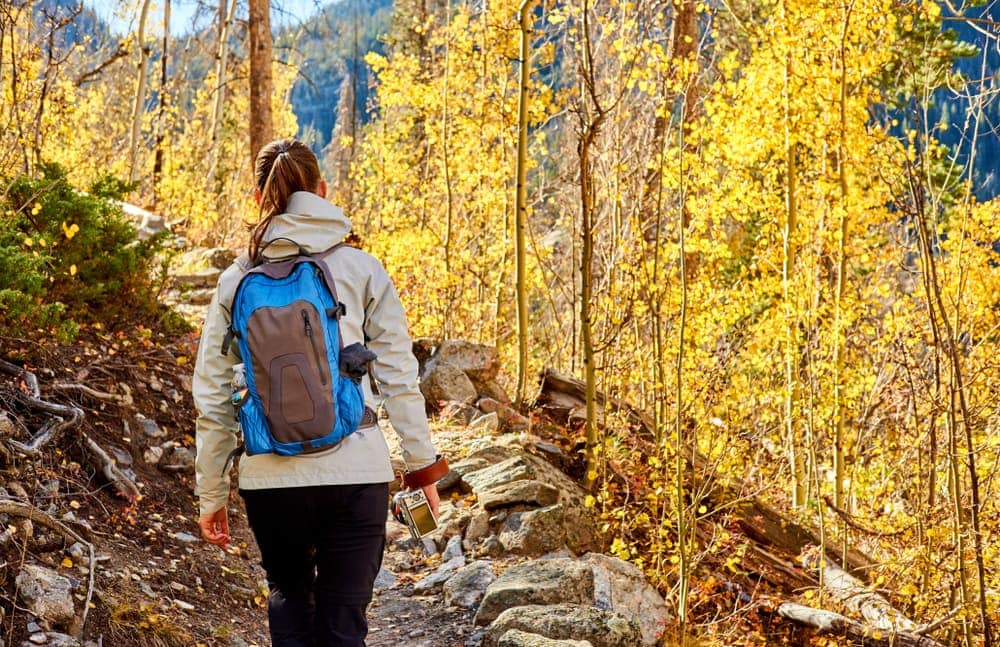
The park experiences a wide range of temperatures due to the change in elevations from the bottom to the top of the park. Be prepared for whatever comes your way with plenty of layered clothing. It’s easy to take them off. But, once you leave them in the car or back at the cabin, you can’t put them back on.
3. Hike with a friend or let someone know where you are going.
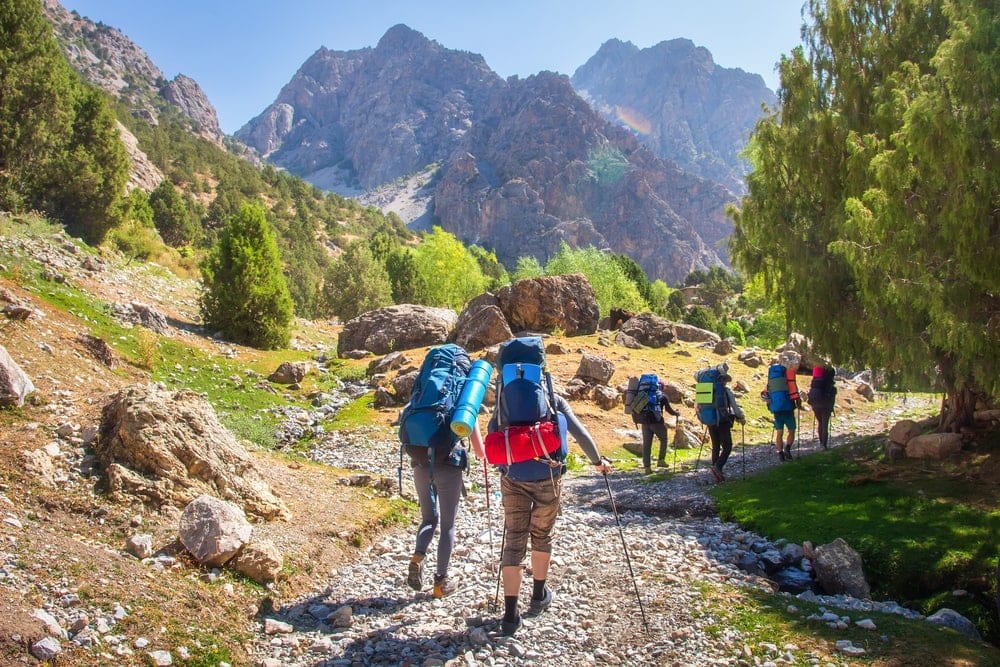
Solo hikes can be quite calming. They allow you the chance to take some deep breaths and enjoy the little things on your hike. In addition, you can stop whenever you need instead of feeling the pressure of a group.
However, hiking alone in the wilds of a large park such as RMNP can be pretty dangerous. Therefore, it is often suggested to do longer hikes with another person.
If you decide to go by yourself, share your route and approximate arrival times at specific waypoints with a friend or family member. That way, if anything does go wrong, they can get help to you much faster.
4. Pay attention to the weather.
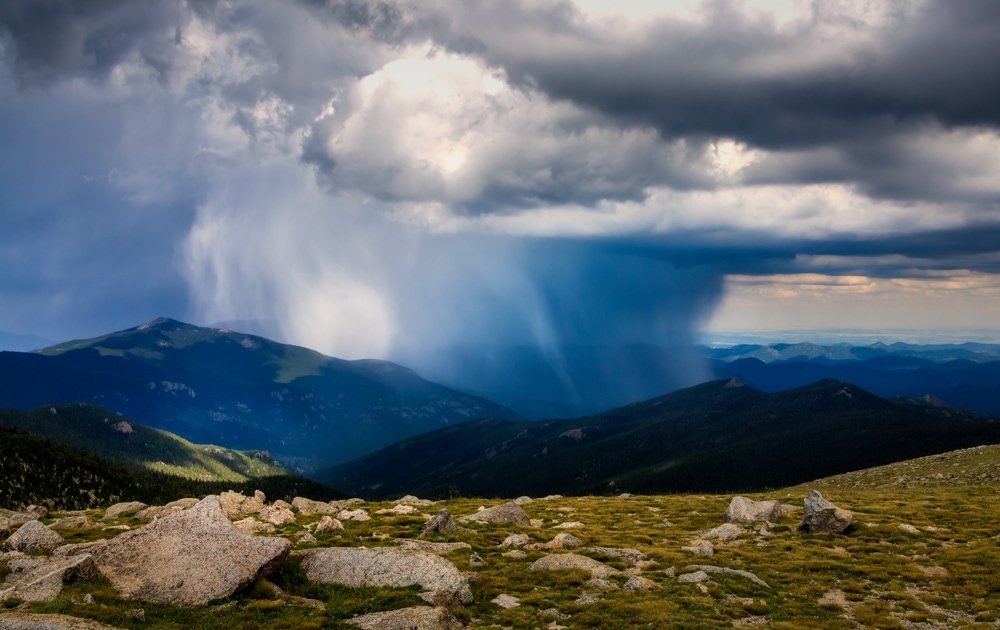
The weather throughout RMNP can change dramatically very quickly. Don’t let yourself be fooled by warm temperatures and sunny skies in the parts of the park in lower elevations. The weather in high elevations changes rapidly from chilly and clear to frigid and blizzard conditions.
Always check the weather before your trip on the park’s recommended forecasters. Unfortunately, looking up the general area won’t allow you to portray the park’s microclimates accurately.
Our Featured Hikes in Rocky Mountain National Park
COYOTE VALLEY TRAIL: No.1 RMNP hike for seniors
LILY LAKE: No.2 RMNP hike for seniors
BEAR LAKE TRAIL: No.1 RMNP hike for kids
ALPINE RIDGE TRAIL: No.2 RMNP hike for kids
MOUNT IDA: No.1 RMNP hike for day visitors
CHASM LAKE: No.2 RMNP hike for day visitors
OUZEL FALLS: No.1 RMNP hike for spring
FERN FALLS: No.2 RMNP hike for spring
FLATTOP MOUNTAIN: No.1 RMNP hike for summer
YPSILON LAKE TRAIL: No.2 RMNP hike for summer
LOCH VALE: No.1 RMNP hike for fall
WILD BASIN TRAIL: No.2 RMNP hike for fall
CHASM FALLS: No.1 RMNP hike for winter
GEM LAKE: No.2 RMNP hike for winter
Best Hikes in Rocky Mountain National Park For Seniors
1| Coyote Valley Trail
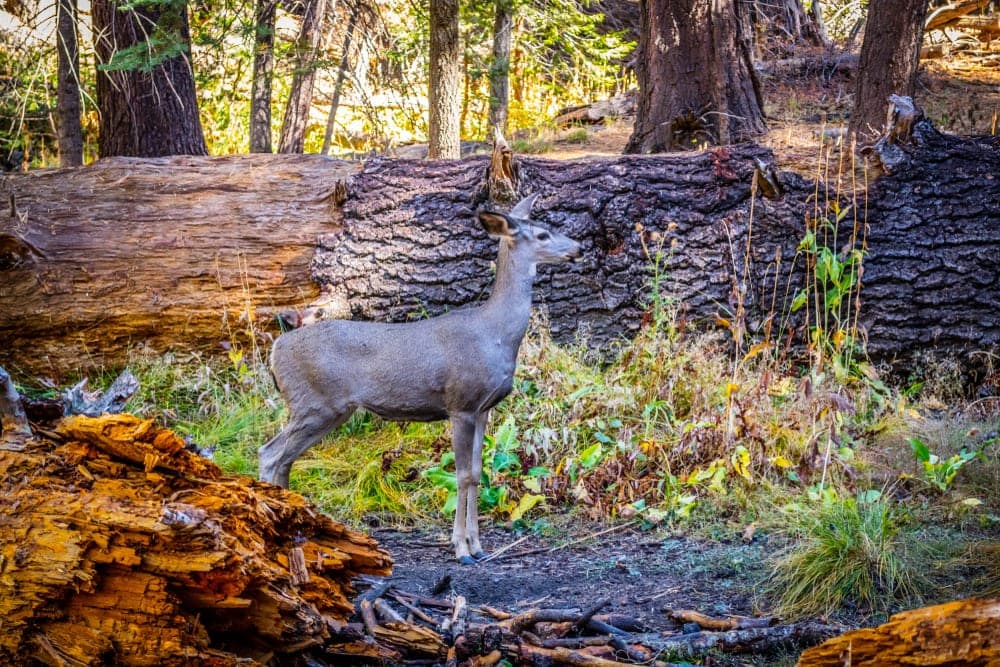
- Length: 1.0 miles
- Location: Coyote Valley Trailhead
- Key features: Easy walk, Wildlife views, Scenic mountain views
If you prefer to hike on level terrain, Rocky Mountain National Park isn’t your best choice. On the other hand, if spectacular views at the end of a steep climb inspire you, this is the place to be. Most people should be ready for a steep climb to the top of any trail. Coyote Valley Trail is mostly packed down with gravel and is also almost level. It makes it one of the park’s most senior-friendly hiking trails.
2| Lily Lake
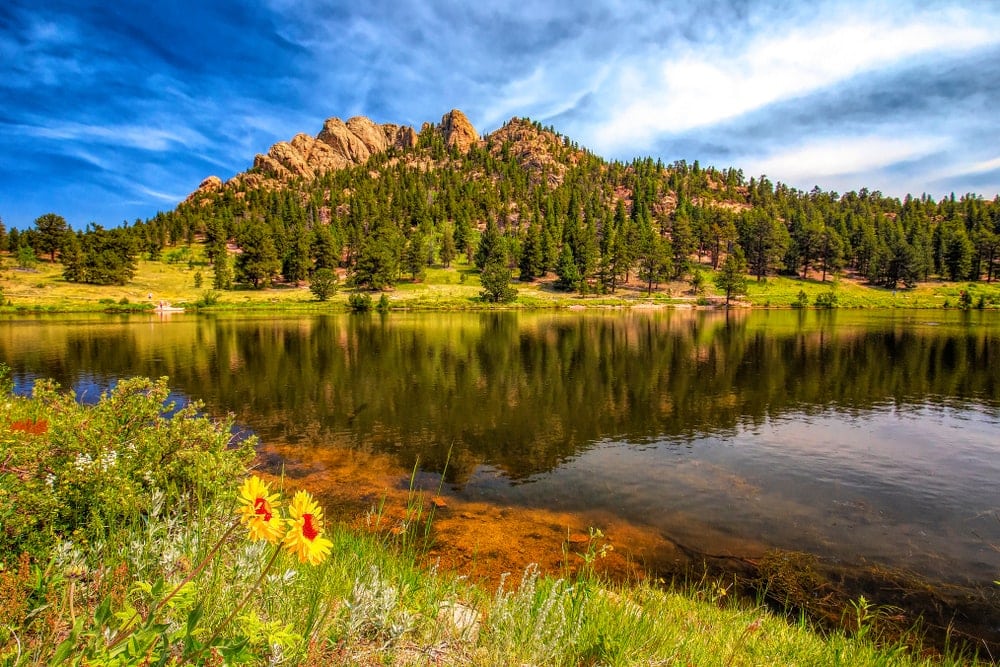
- Length: 0.8 miles (1.3 km)
- Location: Lily Lake Trailhead
- Key features: Mostly flat, Excellent lake access and views, Wildflowers
The trail around Lily Lake is an excellent trail for any age and capability. The trail circles around the lake and meanders through nearby wetlands. Lily Lake is a popular tourist attraction in the park since it is conveniently located to Estes Park. Initially outside the park’s borders, Lily Lake area was purchased in 1992 and incorporated into the park.
Best Hikes in Rocky Mountain National Park For Kids
1| Bear Lake Trail
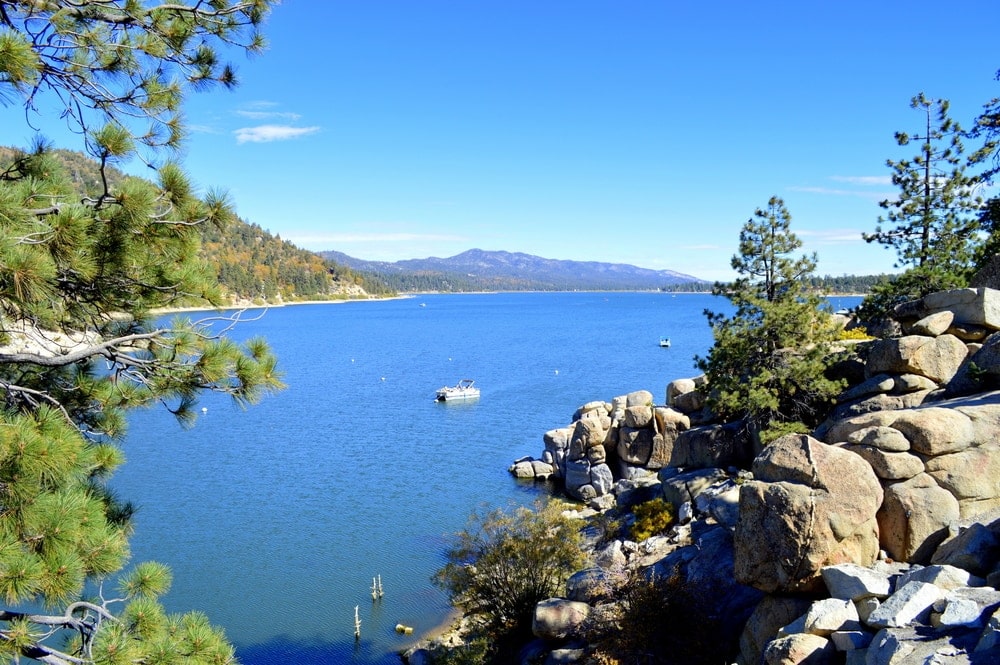
- Length: 0.8 miles (1.3 km)
- Location: Bear Lake
- Key features: Lake views, Fall colors, Easy elevation changes
Kids can seem like energizer bunnies. However, when faced with a long, steep hike, they might not seem quite as excited. If you are trying to show your kids the joys of nature and hiking, Bear Lake is a great place to start. The trail loops around the lake. Starting at 9,475 feet (2,887.9 m) of elevation but hikers only experience 45 feet (13.7 m) of elevation change on the route.
This lake is quite popular throughout the tourist season because of its beauty and kid-friendly route. Consider using the free park shuttle to get to Bear Lake instead of driving in circles trying to find a parking spot.
2| Alpine Ridge Trail
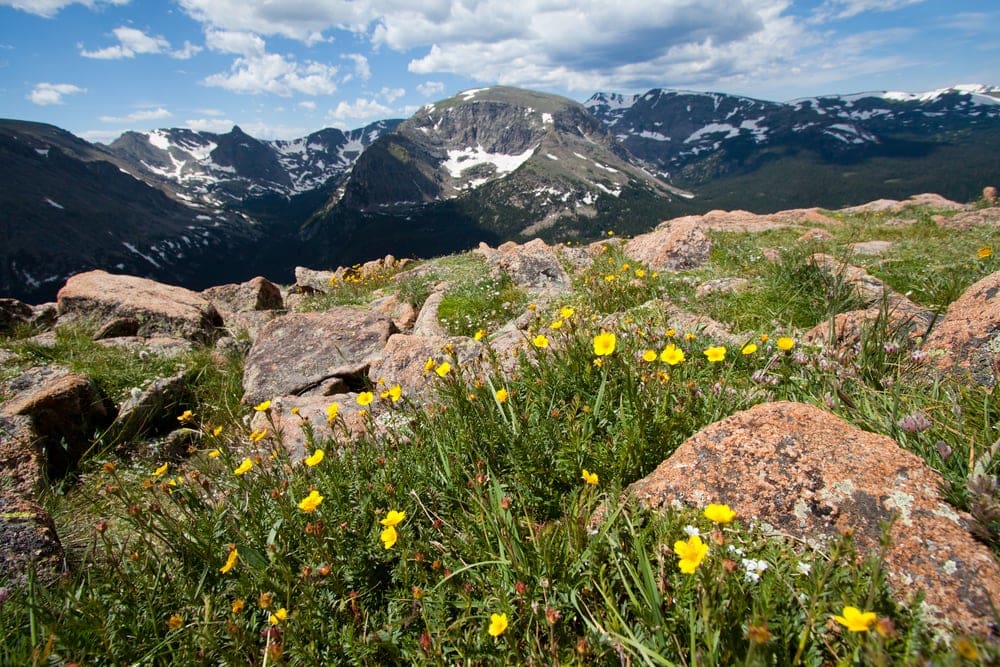
- Length: 0.6 miles (0.9 km)
- Location: Alpine Visitor Center
- Key features: Wildflowers, Snow, Panoramic Views, Wildlife
Although Bear Lake is beautiful, visitors come to the park to take in the epic panoramic views. The Alpine Ridge Trail is one of the best trails to get incredible views without spending too much energy to get there. Start from the Alpine Visitor Center at almost 12,000 feet (3,657.6 m) above sea level. The trail climbs about 209 feet (63.7 m) of elevation gain, but the view is well worth the trip.
Best Hikes in Rocky Mountain National Park For Day Visitors
1| Mount Ida
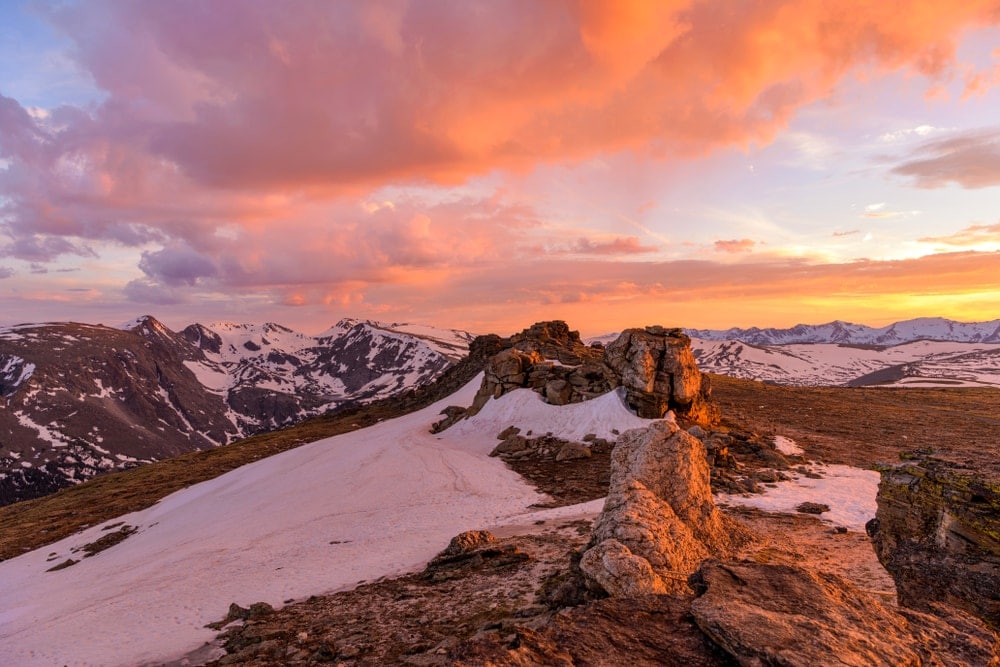
- Length: 9.5 miles (15.3 km)
- Location: Milner Pass
- Key features: Breathtaking panoramic views, Wildlife, Wildflowers
Mount Ida’s trail is dangerously deceiving but well worth it as long as you have a healthy respect for the trail. Hikers face approximately 2,500 feet (762 m) of elevation gain on the trail. Another consideration is most of the trail is exposed on the mountainside.
Bring plenty of water, clothing layers and sun protection on this hike. It is a rewarding summit hike that most will say offers the most stunning views you can get in the park.
2| Chasm Lake
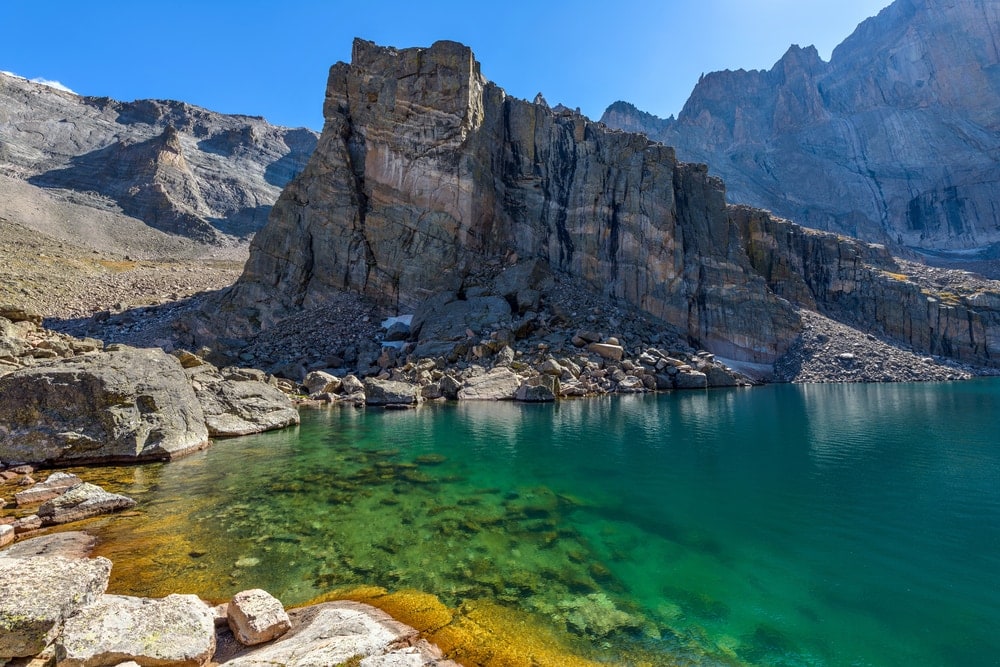
- Length: 9 miles (14.5 km)
- Location: Longs Peak trailhead
- Key features: Incredible panoramic views, Access to an alpine lake, THE Longs Peak Sunrise Shot
Chasm Lake is a fantastic hike for those looking for a longer trek. If you want a full-day hike, this is a good choice. It offers views that are hard to top anywhere else in the park. Add summiting Longs Peak into the mix if you feel adventurous.
The trail starts through a dense forest. Eventually, you climb out of the treeline and steadily approach the profile of Longs Peak. Once you reach the lake, you have come to one of the most photographic places in America. The sunrise shot is one of the classic, beautiful shots you can get in the park.
Best Hikes in Rocky Mountain National Park For Spring
1| Ouzel Falls
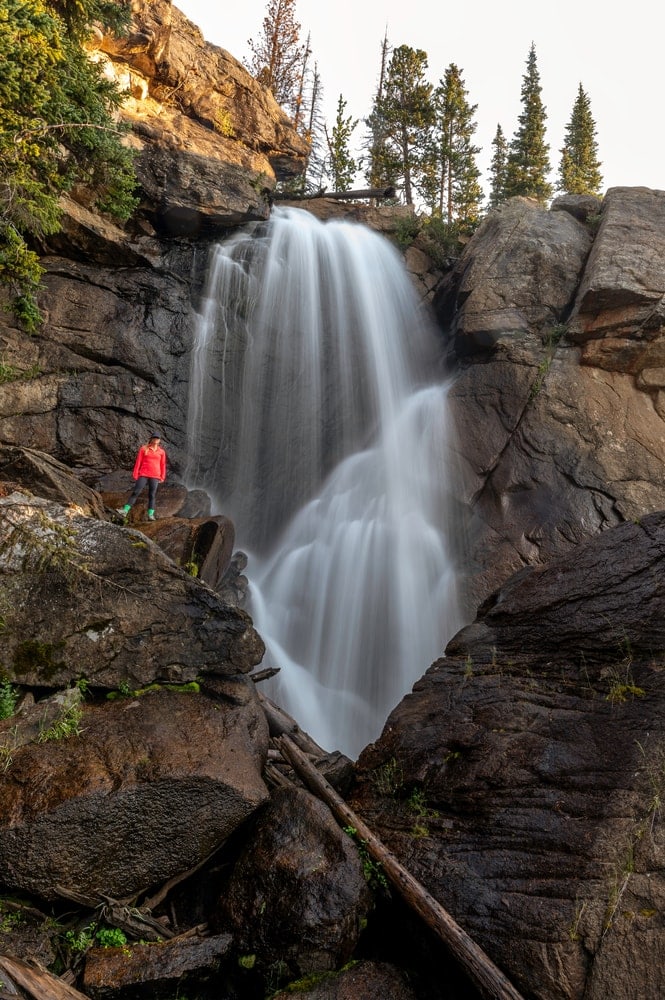
- Length: 5.4 miles (8.7 km)
- Location: Wild Basin Trailhead
- Key features: Waterfalls
The stunning 40 ft tall Ouzel Falls is the most famous waterfall trail in the park. It is the tallest waterfall in Rocky Mountain National Park. Rated a moderate trail since you still experience about 870 feet (265 m) of elevation gain. Although the region is quite remote, this trail is heavily trafficked.
2| Fern Falls
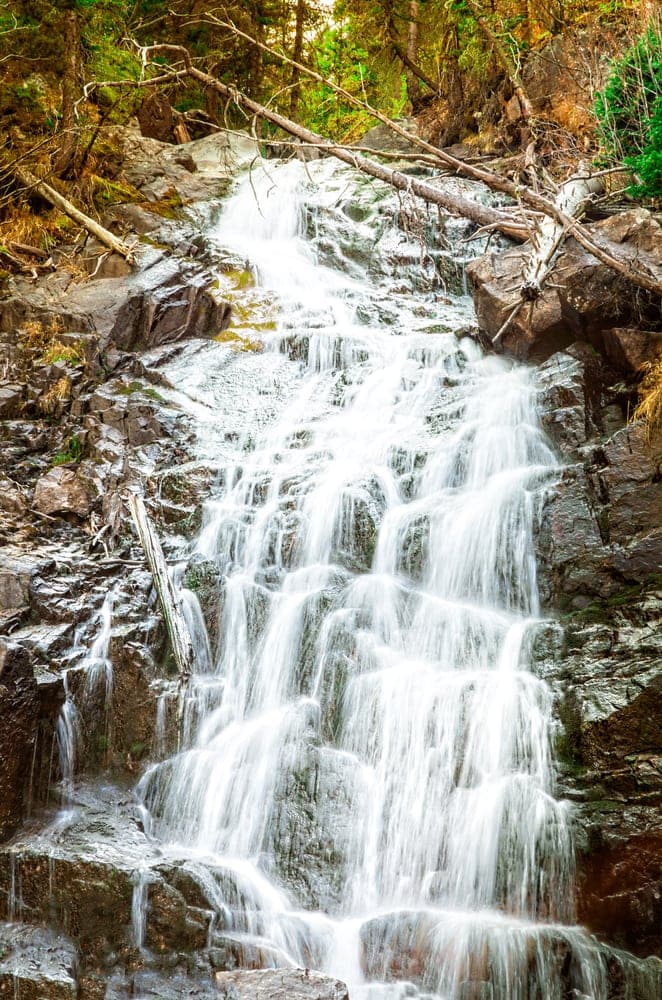
- Length: 5.2 miles (8.4 km)
- Location: Fern Lake Trailhead
- Key features: Wildflowers, Waterfalls, Fall colors
Fern Falls is another beautiful waterfall that becomes especially impressive during the spring season because of the melting snow. The cascading waterfall coats the surrounding forest in a fine mist that makes it markedly cooler than the surrounding area. Fern Falls isn’t just one waterfall, either. Visit a variety of falls as well as several vistas across Big Thompson Valley stretching below.
Best Hikes in Rocky Mountain National Park For Summer
1| Flattop Mountain
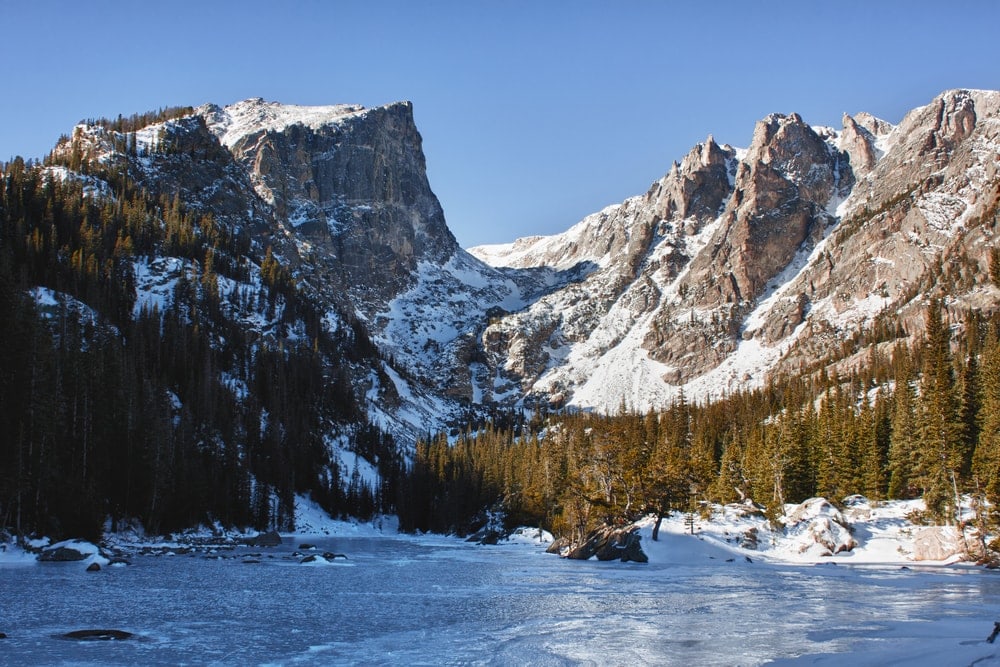
- Length: 8.9 miles (14.3 km)
- Location: Bear Lake
- Key features: Panoramic Views, Lake access
One of the earliest trails built in the park, Flattop Mountain Trail is also called the Grand Trail and the Big Trail. Park historians believe the trail was partially built with prisoner labor in 1925. The trail begins at the Bear Lake Trailhead, use the free park shuttle to get there during peak season.
Along the trail, be prepared for some steep gains in elevation. The total elevation gain on the trail is about 2,850 feet (868.7 m). The views along the way to the summit offer opportunities to rest and catch your breath. The Arapaho Indians likely once traveled a similar trail to get through the park and reach traditional hunting grounds in the Great Plains.
2| Ypsilon Lake Trail
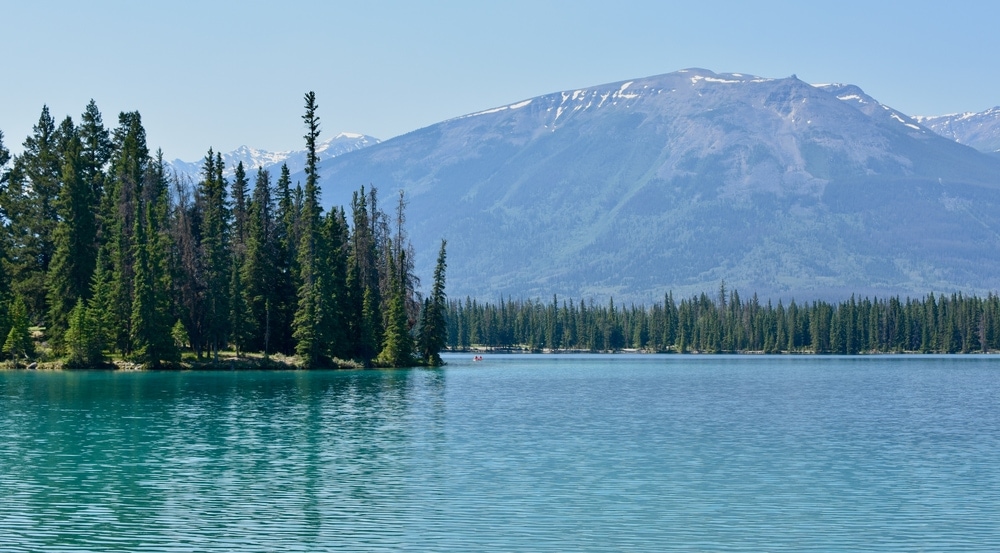
- Length: 9.0 miles (14.5 km)
- Location: Lawn Lake Trailhead
- Key features: Waterfalls, Lake views
Ypsilon Lake trail is a strenuous hike. Doing it during the summer will mean plenty of access to the lakes and a slope that isn’t icy. However, you should pack plenty of water to get you out to the lake and back.
Once you reach Ypsilon Lake, those that are adventurous and experienced with basic scrambling might want to continue along a western trail following an inlet creek. This takes you to beautiful alpine lakes known as Spectacle Lakes just beneath Ypsilon Mountain.
Best Hikes in Rocky Mountain National Park For Fall
1| Loch Vale
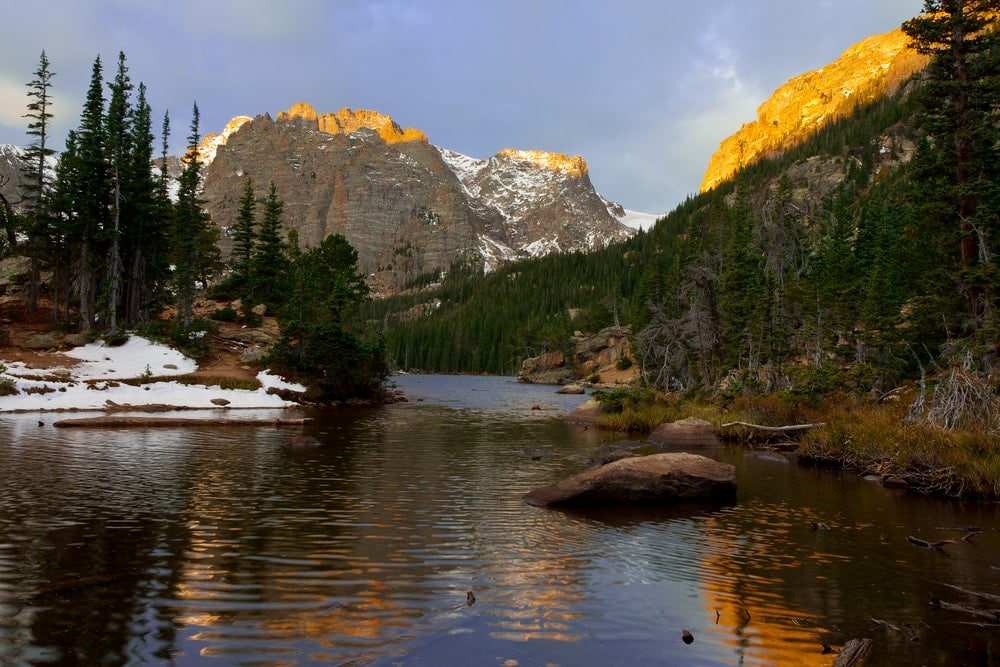
- Length: 5.7 miles (9.2 km)
- Location: Glacier Gorge
- Key features: Waterfalls, Brilliant lake views
Avoid the stress of finding a parking spot and take the shuttle bus to the Bear Lake Road area. From here, you can quickly get to the Bear Lake Trailhead and onto the Glacier Gorge Trailhead. The Loch Vale area features beautiful evergreen and deciduous forests. The fall colors are stunning and compliment the lake views you get towards the end of your hike.
2| Wild Basin Trail
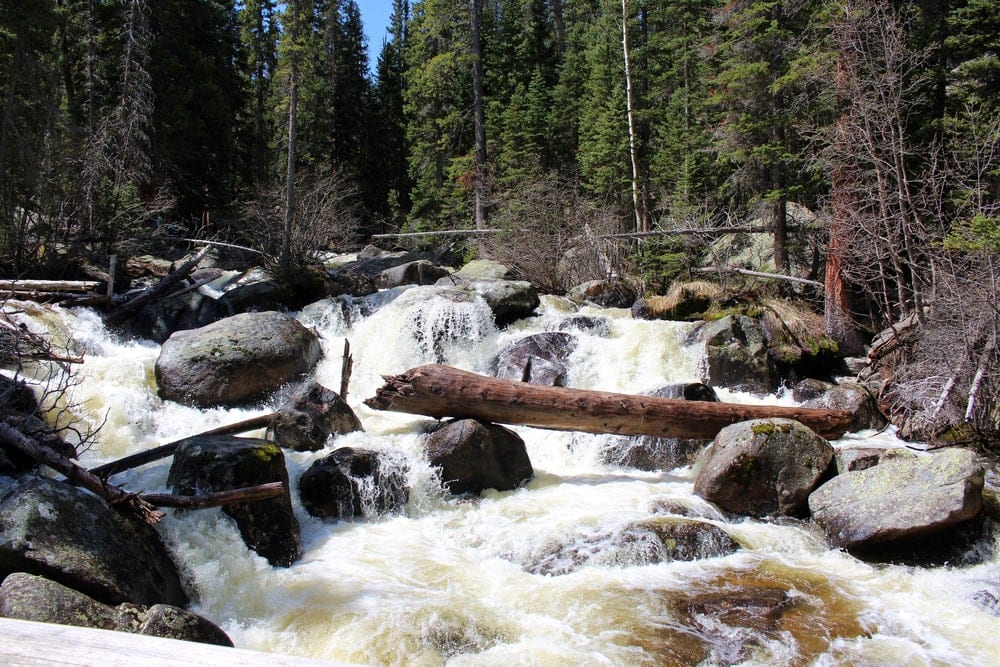
- Length: 3.1 miles (4.9 km)
- Location: Ouzel Falls trailhead
- Key features: Waterfalls, Fall colors
The Wild Basin Trail is one of the more remote trails in the park. It is not as well-known or popular since it doesn’t feature those sought-after panoramic views. However, you will still pass plenty of exciting features. They include Calypso Cascades and Copeland Falls. Eventually, the trail leads to Ouzel falls, another visitor favorite.
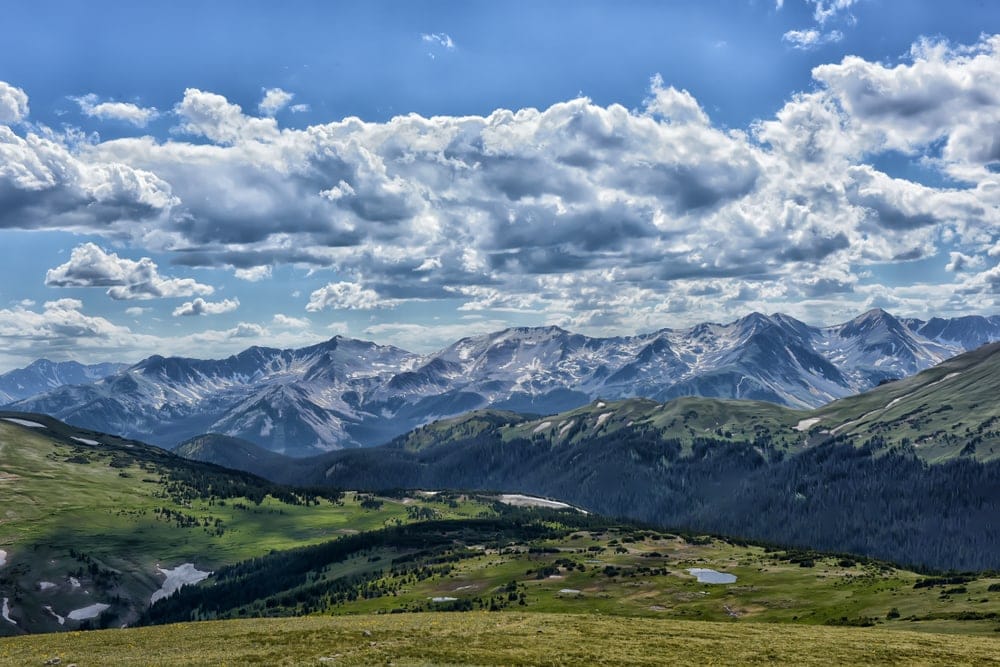
Best Hikes in Rocky Mountain National Park For Winter
1| Chasm Falls
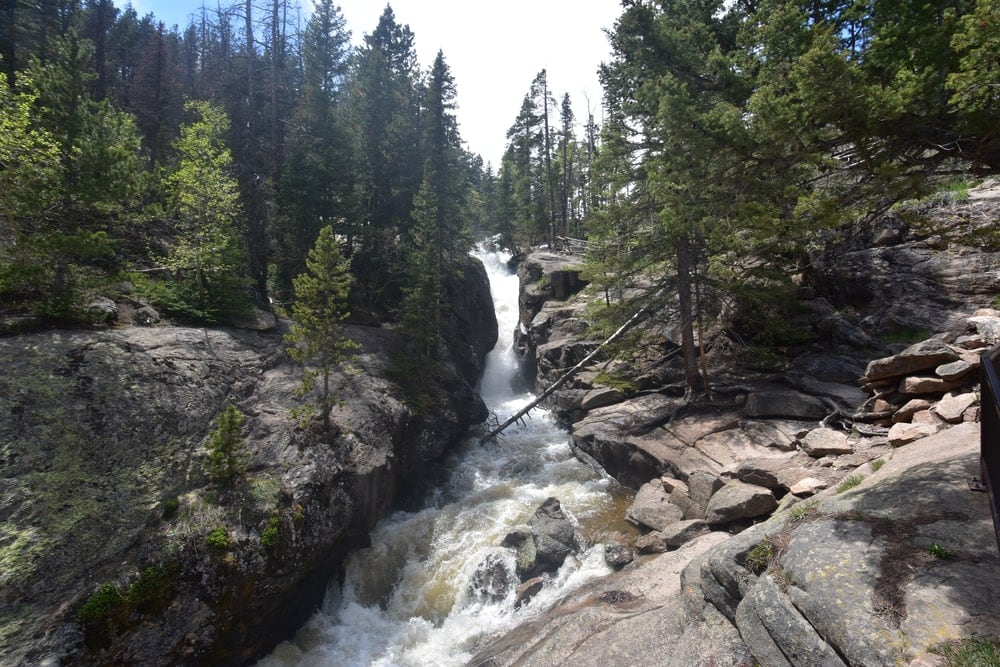
- Length: 2.5 miles (4.0 km)
- Location: West Alluvial Fan parking lot
- Key features: Waterfalls, Historic
To get to Chasm Falls in the winter, you will need to follow the Endovalley Road from the west end of Horseshoe Park. Follow this road over the bridge until you reach the road closure. You should be able to park and hike from there in the West Alluvial Fan parking lot. From there, you can hike to the Endovalley Road junction.
The trail has historic features, including the remains of cabins once used by prison laborers to build the Old Fall River Road. Chasm Falls will be frozen with beautiful ice formations in the winter. Be sure to navigate the area with utmost caution.
2| Gem Lake
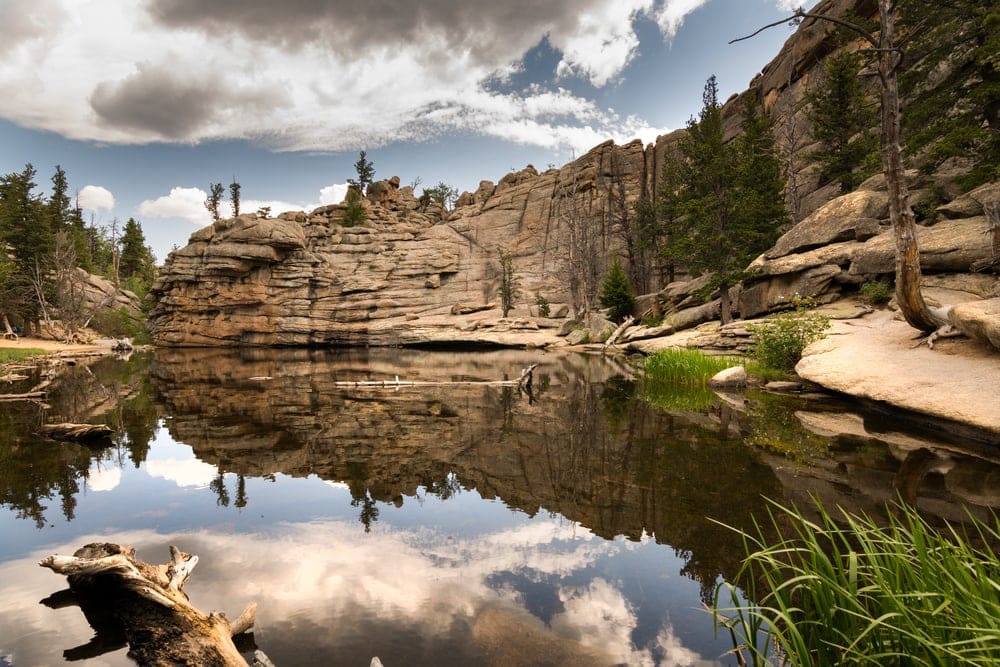
- Length: 1.6 miles (2.6 km)
- Location: Lumpy Ridge Trailhead
- Key features: Lake views, Fall colors, Panoramic views, Lake access
Gem Lake is a shallow lake high in the granite domes that make up Lumpy Ridge. The trail is relatively short, but it is pretty steep. You will experience about 1,000 feet of elevation change throughout. For this reason, it is rated a moderate hike. You will likely want snowshoes for better traction during the winter.
Along the hike, you will get incredible views of Estes Valley and across the Continental Divide. You will also see the balanced rock they call Paul Bunyan’s Boot.
Key Information for Hikers in Rocky Mountain National Park
Thinking about the expansive views you will likely experience is a lot more fun than figuring out the nitty-gritty details of your trip. However, it is helpful to understand the park’s layout. It can also augment your trip to know what programs the rangers offer and where to find the trailheads you need.
Visitor Center Locations and Services
Since RMNP is so expansive with numerous entrances and focal points, there are multiple visitor centers.
The Beaver Meadows Visitor Center is the most popular center. It has the largest gift store and facilities available. You can reach it through the southeast entrance using Highway 36. In addition, it hosts the largest number of Park Rangers for any assistance and the Rocky Mountain Conservancy Nature Store.
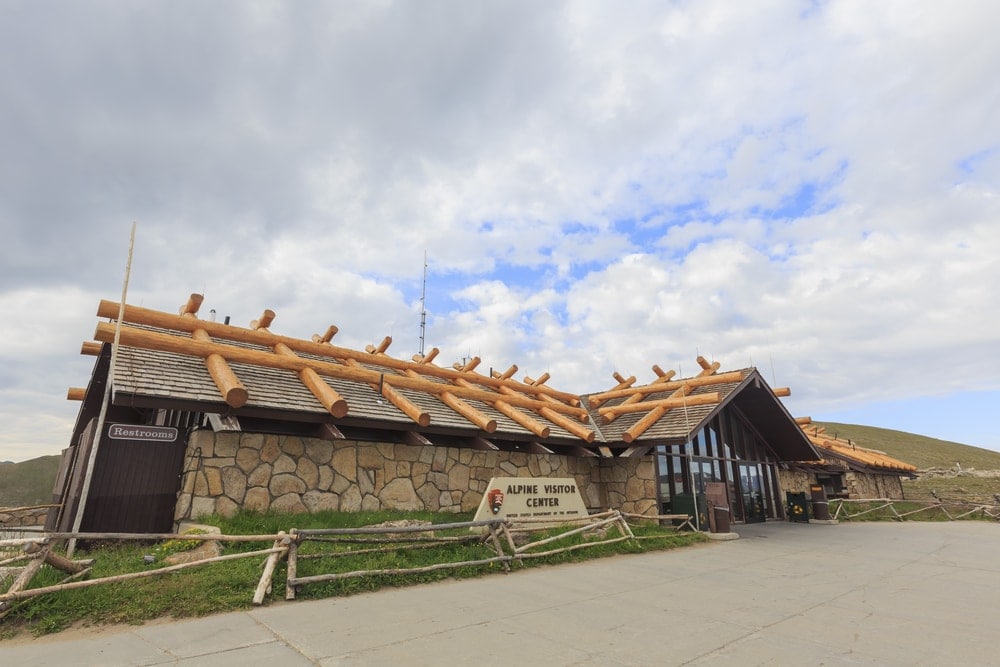
The Alpine Visitor Center is on the Trail Ridge Road. It is the visitor center at the highest elevation throughout the entire National Park System. The Center is located at 11,796 feet (3,595.4 m) above sea level. Since it is so high, it is only open when the Trail Ridge Road opens. Most years that means it is open from late May through mid-October.
The Fall River Visitor Center is another large center in the park featuring a large souvenir shop and plenty of scenic views. You can access it from Estes Park on US-34. It is open 362 days a year.
The Kawuneeche Visitor Center is quite close to the Grand Lake Entrance for the Park. That is useful for those coming in from the opposite side of the Estes Park entrance.
Finally, there are historical centers as well as Sheep Lakes Information Station. Sheep Lakes Information Station gives you excellent views of wildlife, particularly bighorn sheep. You can reach it on US Highway 34W in Horseshoe Park.
Ranger Programs in Rocky Mountain National Park
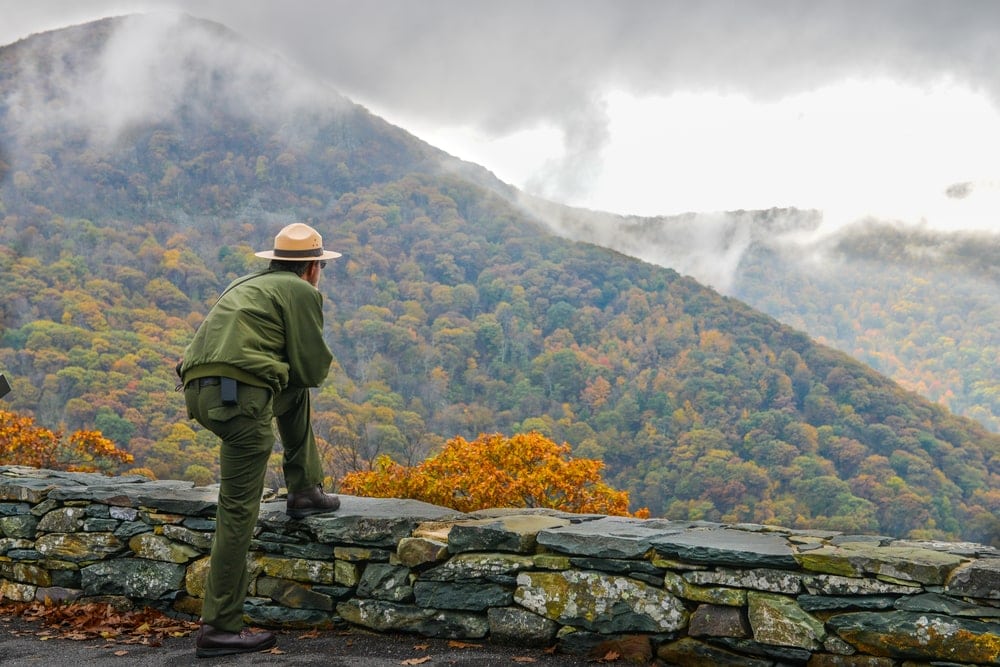
Park Rangers in RMNP guide hundreds of programs throughout the year depending on the season and demographic. For example, you can schedule a field trip or a classroom program if you have a group of young children you want to bring to the park.
Are you and your family coming to the Park? Then there are chances to join the National Park System’s Junior Ranger program almost every day. You get to participate in a series of activities during each park visit and answer questions from a Park Ranger. Then, you will receive your Junior Ranger patch and certificate.
Some other programs Park Rangers lead at the park include:
- Bear Necessities
- A ranger will teach you about the fantastic Rocky bears and conservation efforts to help save them.
- Ranger’s Choice Programs
- A variety of program types and guided hikes as chosen by the ranger on that day.
- Elk Echoes
- Elk are special to the ecosystem of RMNP. Learn about their particular adaptations, migrations and mating behaviors in this 30-minute talk.
- High Country Tails
- This talk highlights the challenges of winter in the National Park and the incredible ways life in the mountains adapt to survive.
- A River Runs Through Us
- This is one of their featured guided hikes. The ranger takes you on a walk to Adams Falls while speaking of the shaping ways and the power of water.
- Leave It to Beaver
- This class is a learning seminar about the Park’s wild engineers and how they shape and change the park.
There are many more events in the park as well, particularly during the summer. You can find the current ranger programs for your trip’s period here.
Understanding the Park’s Elevation
The elevation in Rocky Mountain National Park ranges widely. It is one of the most impactful and potentially life-threatening aspects you need to respect as a visitor.
The elevation starts at 7,860 feet (2,395.7 m) above sea level. It extends to 14,259 feet high (4,346.1 m).
Some mountainous regions feature one mountain as the highest point in the park. However, RMNP features 77 mountain peaks over 12,000 feet (3,657.6 m) high.
Make sure you have layers and are weather-aware as you reach higher elevations. Don’t forget that the higher you get, the more likely you are to sunburn. It happens even if you are quite cold. Don’t be over-ambitious and tackle a hike outside of your fitness level in high elevations.
Wildlife to Watch for in Rocky Mountain National Park
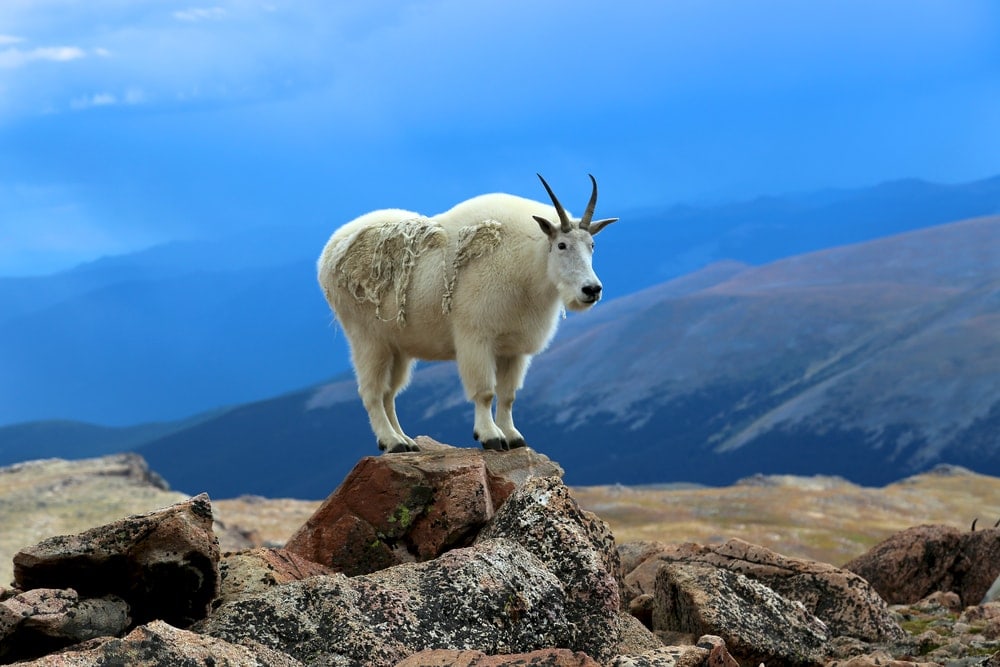
Part of the reason RMNP is a protected area is because of its high suitability for a range of sensitive wildlife. There are about 270 bird species that live throughout the park, including the:
- White-tailed Ptarmigan
- Steller’s Jays
- Three-toed Woodpecker
- Western Tanager
- Golden Eagles
The park hosts wild elk, bighorn sheep, bears, bobcats, pikas, moose, mountain lions and various species of deer.
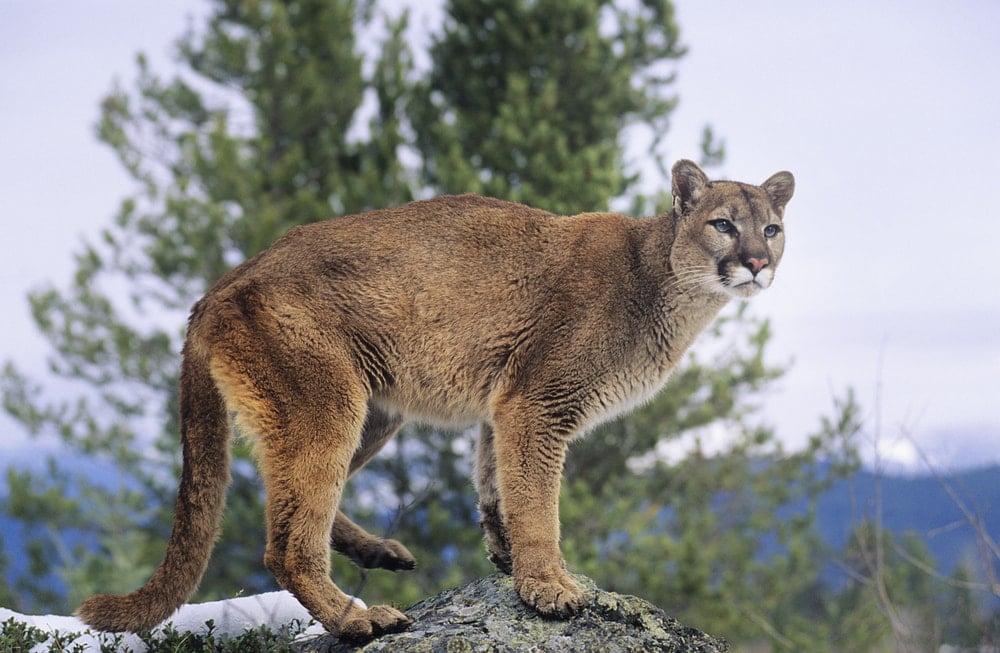
Follow the ranger’s instructions about encounters with animals in the park. Remember wild animals are not interested in sitting still for visitor’s selfie photographs.










